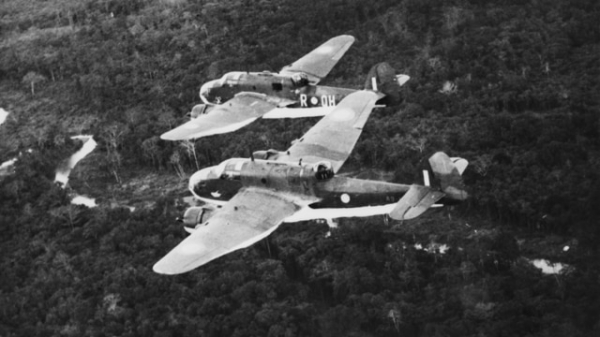After nearly eight decades of uncertainty, closure finally emerges as the remains of two Australian World War II officers are identified, marking a poignant chapter in history. The tragic fate of the crew aboard the Number 100 Squadron (100SQN) WWII Beaufort aircraft, lost to the depths of the sea off Papua New Guinea's coast in 1943, has now found a voice. Among the brave souls aboard were three Queensland men and a Tasmanian, their names etched in memory and valor.
In a remarkable turn of events, a search spearheaded by mining magnate Andrew 'Twiggy' Forrest brought renewed hope. Commissioning a dedicated dive team, driven by personal connection, they unveiled the wreckage submerged beneath the waves in 2020. It wasn't until February 2022, however, that the true extent of their discovery unfolded. Amidst the wreckage, obscured by time and the elements, lay bone fragments—silent witnesses to a bygone era.
The meticulous efforts of anthropologists and DNA specialists lent clarity to the shadows of history, confirming the identities of Warrant Officer Clement Batstone Wiggins and Warrant Officer Russell Henry Grigg. Yet, the ocean's depths still hold secrets, as the remains of Flight Sergeant Albert Beckett and Flight Sergeant Gordon Lewis Hamilton remain undiscovered.
Air Marshal Robert Chipman, speaking on behalf of the Air Force, expressed gratitude for the relentless pursuit of closure. For the families left behind, this revelation offers solace, a sacred acknowledgment of their loved ones' final resting place. The solemn vow to honor the fallen echoes through time—a testament to unwavering dedication.
In the heart of this journey lies a poignant reminder of sacrifice and duty. Andrew Forrest, touched by personal loss, underscores the profound significance of remembrance. As plans for a memorial take shape, the nation prepares to pay homage to these courageous souls, eternally bound by their commitment to defend liberty.
Amidst the artifacts recovered, the aircraft's identity plate and cockpit lever stand as silent witnesses to a generation's sacrifice. With reverence and respect, they will return to Australian soil, a tangible link to a chapter in history that will never fade.
As the sun sets on the horizon, casting its golden glow upon the waves, the memory of these valiant men remains steadfast—a beacon of courage and resilience for generations to come.
In conclusion, the discovery of the Royal Australian Air Force WWII bomber and the positive identification of two crew members after 79 years is not just a closure for the families involved but a poignant reminder of the sacrifices made by young men and women during times of conflict. It's a testament to the unwavering commitment to honor those who have served and fallen for their country. As the nation prepares to commemorate the lives lost, let us never forget their bravery, their dedication, and the ultimate price they paid for the freedoms we cherish today. Their memory lives on, eternally etched in the annals of history, serving as a beacon of inspiration for future generations.

